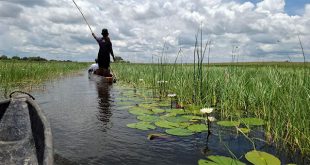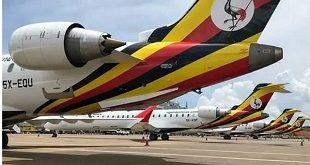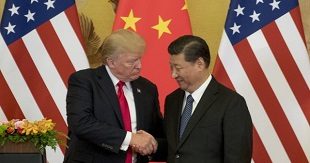
East African biennale Kampala focuses on commonality
Kampala, Uganda | DOMINIC MUWANGUZI | Art has a universal language. That is why five East African countries can showcase as part of the East Africa Art Biennale currently running at AKA Gallery in Kamwokya, Kampala. The artworks, by different artists, from different countries and in different media and technique, communicate a common language of cultural integration. Incidentally, cultural integration is the inspiration of this itinerary exhibit that started moving from Dar-es-Salaam, Arusha, Nairobi and is now in Kampala.
Regardless of the touring schedule, artists have produced art that symbolises that East Africans share a common culture and aspirations. As such, the drawings of Ugandan artists participating in the festival like Ibra Muwanga, explore the same themes like their counterparts from Rwanda, Kenya and Tanzania. Muwanga’s artistic narrative concentrates majorly on the subject of children in deprived communities that are loosely known as slums. The drawings of children going about their routine activities more often with smiles lighting their faces; figuratively connotes their innocence and the artist’s advocacy for their rights. Similarly, Tanzania artist, Stephen Mchomvu drawings of children in squalid situations is a metaphor to the struggles of the rural poor.
Notwithstanding, the heartrending drawings of children with a common trait of bright-wide stare, the images provide optimism for both the subject in the painting and the audience. Technically, Ronex Ahimbisimbwe’s technical innovation with adoption of different styles and techniques in his paintings that include collage, printmaking and sculptural elements like form and depth, resonate with Victor Binge, a Kenyan artist, who is eager to experiment with diverse media.
Ronex’s intent to query the status quo with art, but with more emphasis on the power of the subconscious, captivates the attention of his audience. On the other hand, Binge’s exploration between the known and unknown culminate into his making art that is both intuitive and sublime. His colours on canvas are dazzling; invoking an analogy of art that is crawling with life. However, such similarities should not be taken for granted.
The artists’ assertiveness and urgency to communicate a particular message is central here. In this regard, the audience keenly observes the adventurous characteristic of artists in the exhibit; showcasing art on diverse themes like wildlife, waterscapes, personal- identity (LGBTQ) and rural lifestyle. These topics are crucial to the cultural practices of the African in the region. It is through such drawings that these topics can be honestly and objectively be addressed.
The EASTAFAB is an important podium to promote cultural integration because it focuses on the ordinary citizenry who is not necessarily interested in politics or academics. In light of such approach, it is easy to bring communities of the East African region together. Nonetheless, to some critics who many counter that such a project may be futile, it is important to acknowledge the genesis of art as rock art that has been traced in African ancestry over forty thousand years ago.
This fact is enough to legitimize such initiative of cultural appreciation and integration through art. AKA gallery is located on Bukoto Street next to the Alliance Francaise Kampala and Goethe Zentrum Kampala offices. The East Africa Art Biennale exhibition moves to Rwanda and Bujumbura after Kampala.
 The Independent Uganda: You get the Truth we Pay the Price
The Independent Uganda: You get the Truth we Pay the Price





